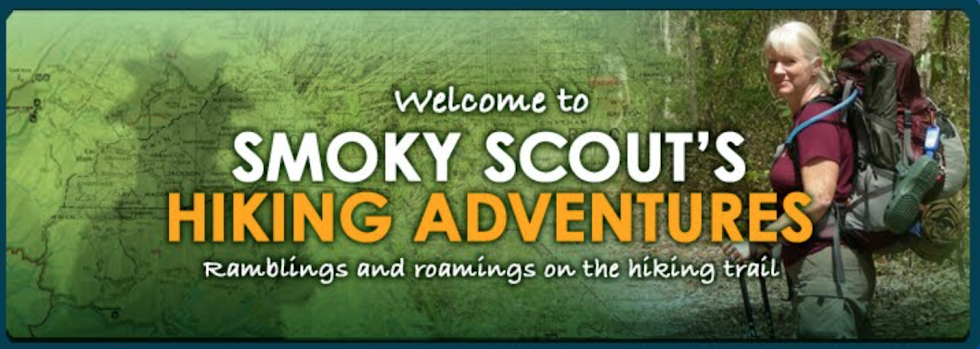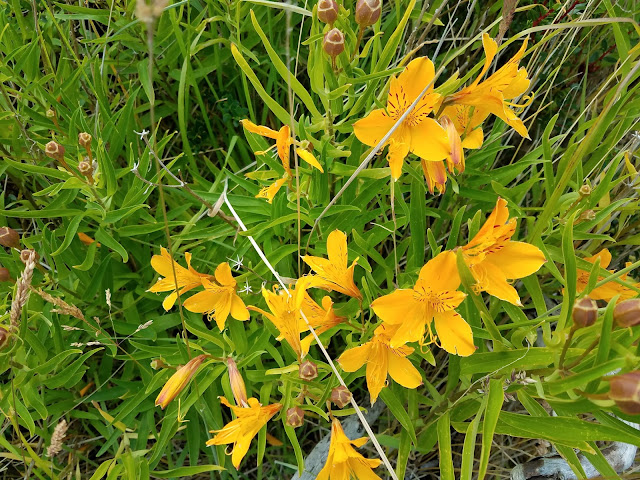Patagonia 2017: My
Favorite Day: Valle Francés - Día Diaz – 2/17/17 – 27 km
Waking up early in a damp, smelly bunkroom, every surface
and inch of floor space covered with muddy hiking gear for eight backpackers
after a day and night of rain. Nothing dry.
Taking turns going in and out of the door, bumping behinds when bending down to
pick up socks. Ah, hiking the “W”! What will the new day bring?
Same breakfast fare, now quite practiced at the egg-and-cheese sandwich combo, sitting by the window looking at misty, wispy clouds. Today’s plan is hiking first to Campamento Italiano, then up-and-back on the middle section of the “W” called the French Valley, then on to Refugio Paine Grande on the edge of Lago Pehoe. We'll see Los Cuernos (the "Horns") from many sides today.
I stepped out onto the deck to see if it was
really raining or just misting – is the sky lightening behind the mountains?
Everyone scrambled to get backpacks together, pulling on
full rain gear just in case. The sky was
still tentatively gray but visibility was improving. Lots of hikers on the
move, peeling off layers as the day warmed up. First section: 5 kilometers to Campamento Italiano, hugging
the shoreline of Lago Nordenskjöld.
At Campamento Italiano we stopped for a short break. The area is grossly overused, most ground
cover washed away, dirty and stinky pit toilets but no other privacy option. It’s possible that the camp didn’t look its
best because of the recent rains, but I was now grateful for the crowded
bunkroom I had shared.
However, we weren’t here to review the accommodations; we
here to offload our backpacks for the out-and-back hike into the Valle Francés. Cathy, Carol and Rick had small daypacks, but
I did not, so I stuffed my excess gear into their large packs to leave at the
camp. Wow, lightweight euphoria!
Checking out the map and “don’t ask about the weather, we are
in Patagonia”
The hike up Valle Francés was simply stunning and rivals anything I saw on the Mont Blanc trek in 2016. I am immensely grateful that this was a good weather day or we might have skipped it. Beginning at Campamento Italiano and tracing up Río del Francés between the massifs of Cuernos del Paine on the right and Paine Grande on the left, the head of the valley opens to a majestic cirque of granite peaks. Every step was breathtaking.
The hike began with a bit of scrambling and climbing
around boulders and heavy water flowing from the rains. We crossed several side streams, large and
small.
We ate lunch at Mirador Francés, a flat space with low
scrubby trees and a front row seat for Glaciar del Francés flowing down from Cerro
Paine Grande, which was still wreathed in clouds
Blending back into the trees and continuing the gradual ascent, the trail undulated up and down over fingers of land stretching down from the Cuernos massif. (Imagine laying your palm flat on a surface. Now bend at the base of the fingers, which pushes the knuckles up to make a "mountain" of your hand. Now imagine walking across your fingers, up and down and up and down.)
The trail emerged from the trees onto an expansive boulder field
at the head of the valley. Once upon a time a backcountry site (Campamento Británico)
was located near here, but it is now closed. Really a shame, as this would be
the best case scenario for visiting Valle Francés, spending a night or two and having
plenty of time to soak in the glory of the cirque. On the far side of the field, the final brief but steep push
up to Mirador Británico began. Seems
like a pretty good “mirador” from here, you say? True, but you’ve come this far!
Peak names L/R: Purple = Cerro Cota, red = Cerro Catedral, green = Punta Negra, yellow = Aleta
de Tiburón (Shark’s Fin), light blue = Cerro Trono Blanco. Lago Mijal is down there in the valley somewhere.
Looking the other way from Mirador Británico, L/R: red =
La Espada, blue = Cerro Hoja, purple = Cerro Mascara, yellow = Los Cuernos
(back side)
None of this looks real, right? There are more trails in the
valley used for guided hikes that go close to Cerro Catedral and Punta Negra. I wonder if they are allowed to camp…
Sadly, there was too little time to hang around Mirador
Británico, as we had 14 kilometers still to go to Refugio Paine Grande, our home
for the night. We waved goodbye, picked
up the pace and retraced steps, pausing again at Mirador Francés just because…we
may never be here again. This time the
tip of Cerro Paine Grande was visible above Glaciar del Francés. Two condors floated on the air above the
mountain peaks.
Back at Campamento Italiano, we retrieved and repacked our backpacks
and crossed the Río del Francés (yes, on a sturdy bridge) to continue on our
trek.
The last 7.5 kilometers to the refugio were a bit of a march
but filled with much to appreciate, a heaping helping of stunning scenery with a
side of flora and fauna, thanks very much. So much to see looking back, forward, up to the sky and down at our feet.
Amancay is called the “romantic flower,” a symbol of
unconditional love. According to the legend of thwarted lovers, the red streaks
symbolize a young woman’s blood.
The desk manager at check-in had us pegged after a long,
long day. He was flirtatious and
accommodating, giving us a 6-bunk room with no other lodgers – luxury! After last night’s high perch, I sank into a
bottom bunk before searching out the showers. The bathrooms were not too close,
but our room’s quiet back hallway location made it worthwhile. [Note:
showers offer hot water only during certain hours, of which this was not
one, but a cold shower was better than none and I washed my muddy duds to
boot.]
Supper was served cafeteria style with plenty of room to
spread out – again, a welcome change from last night’s cramped dining room – but
the fare was not new: chicken, mashed potato, simple salad and flan for
dessert. Our longest hiking day so far
in Torres del Paine, yet it was still light out, so we lingered over our food
to enjoy the space.
"There
are none happy in the world but beings who enjoy freely a vast horizon." ~Henry
David Thoreau




























































